Architecture on the Road
SHAWAN ANCIENT TOWN – LINGNAN ARCHITECTURE IN GUANGZHOU
Lingnan’s Architecture is the traditional Cantonese style, typical of the region around the city of Guangzhou in the Guangdong Province of Southern China.
You don’t need to go too far into the countryside to have a glimpse of this beautiful and richly decorated style. The district of Panyu, in the southern part of Guangzhou city, is in fact an ancient abode of the traditional city of Shawan, founded more than 800 years ago. There are many buildings of historical and architectural interest to be admired in this small town: temples, shrines and ancestral halls, protected heritages houses and public buildings that display the colorful and intricate decorations of Lingnan’s Architecture, allowing visitors to experience this elegant vernacular style within an easy half-day trip from the city center.
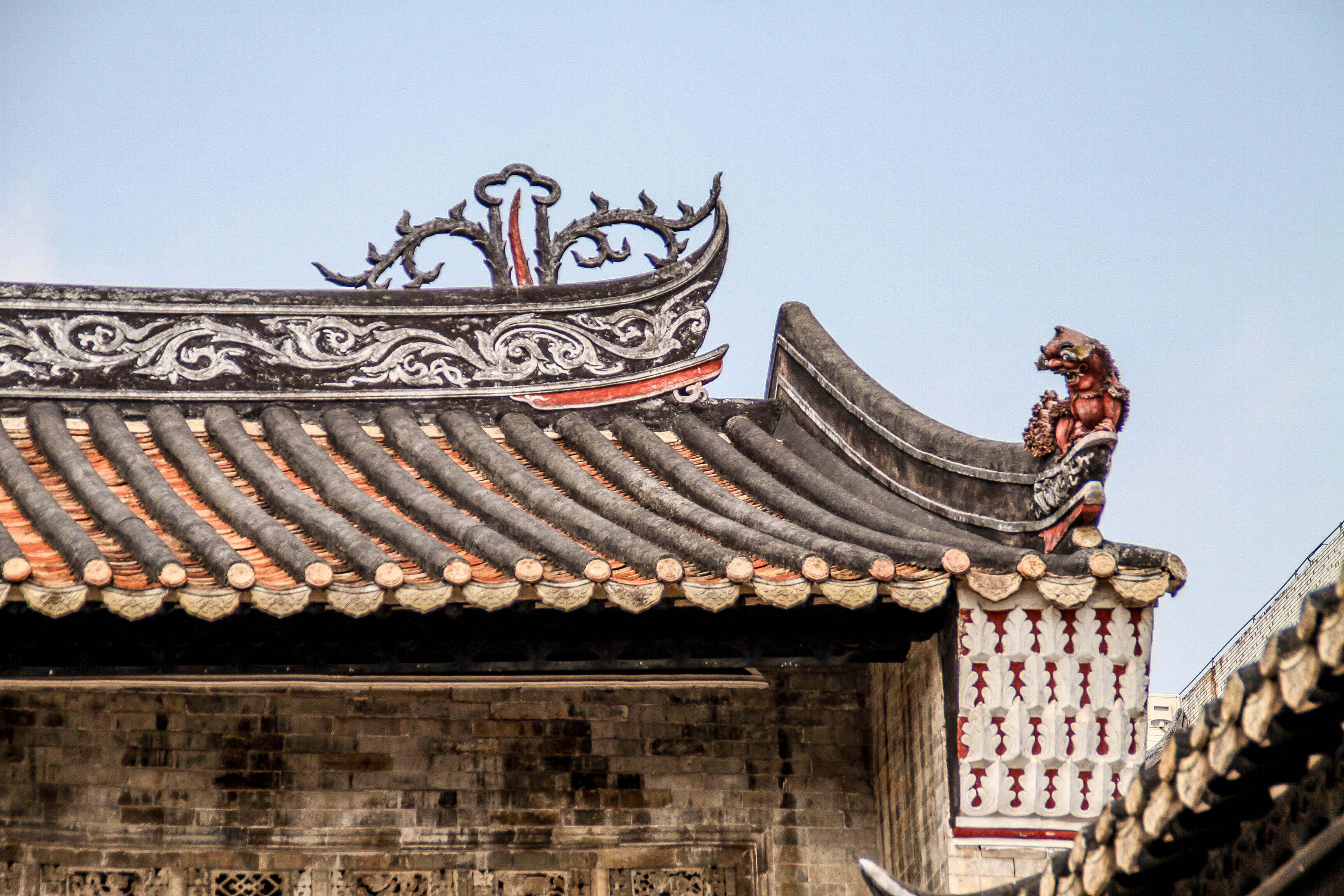
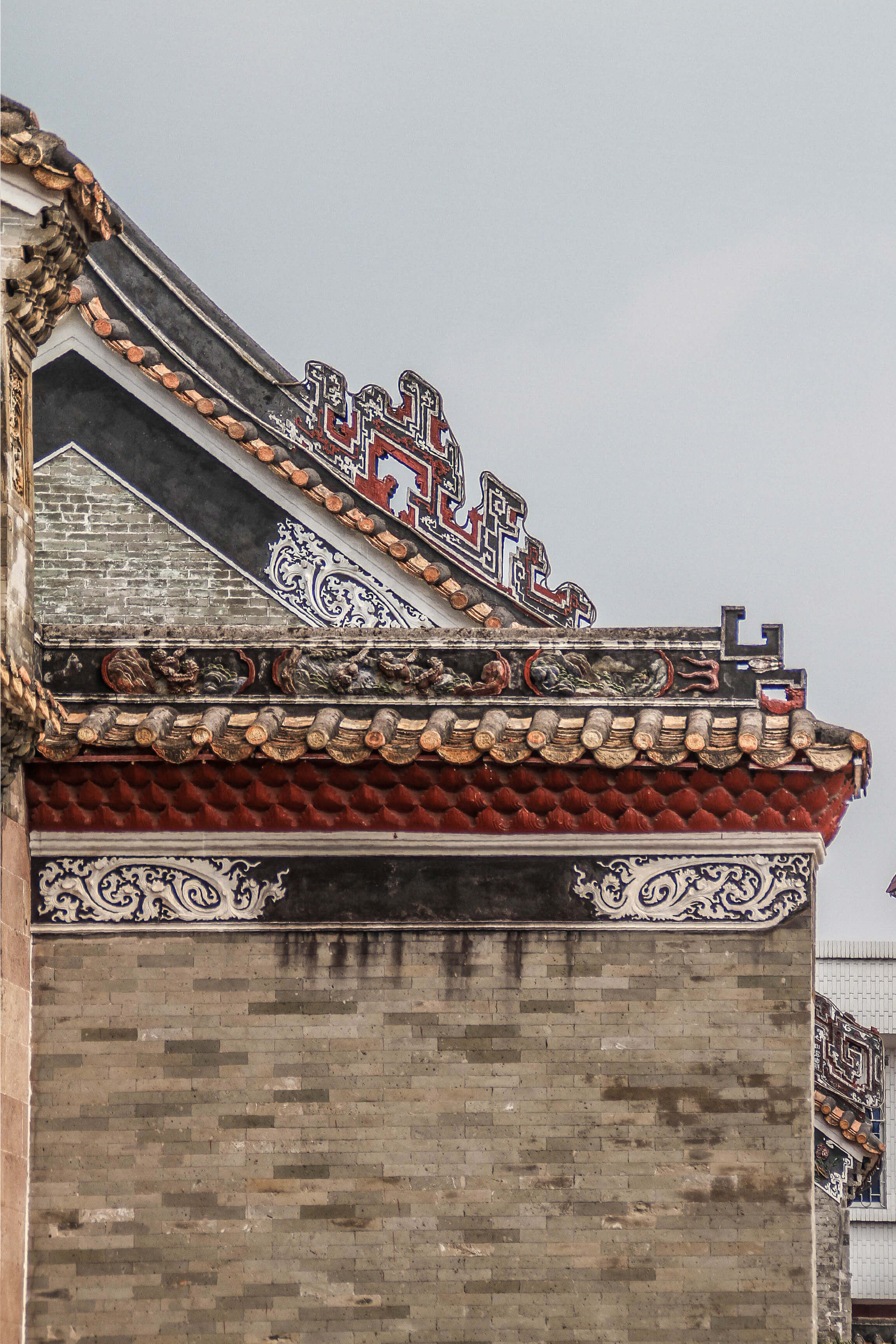
Nowadays Sahawan Ancient town has been almost completely embedded in the modern Gaungzhou metropolitan area, which makes it easy to reach by public transport.
To reach the city from Guangzhou city center:
Take metro line 3 to Shiqiao Station and take exit B to walk to Baiyue Plaza West Entrance. Take bus Pan 67 to Shawan Culture Center.
Or you can exit Shiqiao station from exit C and take bus Pan 7/7b to Shawan Culture Center.
At the city entrance, it is possible to purchase a 40 rmb ticket valid to enter the heritage sites of the town. Just strolling around in its alley is free of charge.
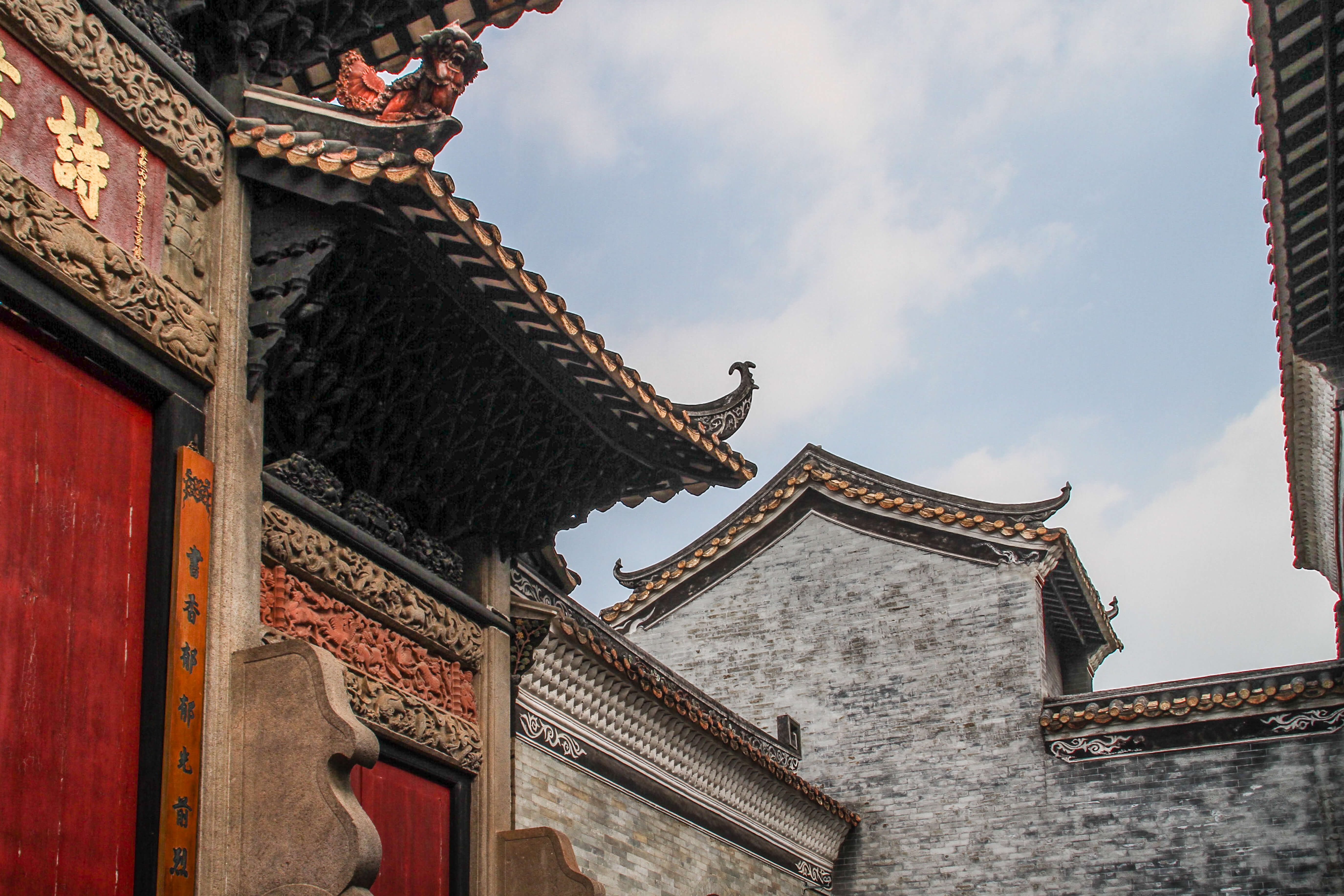
Lingnan-style architecture is a vernacular typology of the Cantonese area of Guangdong and Guangxi Provinces, and owes some of its characteristics to the warm and humid climate of southern China.
Among its most peculiar features, we can admire:
– large use of open structures like porches, archways and balconies, to allow natural ventilation
– the use of cold alleys: narrow corridors, which can be indoor or outdoor, walled on both sides. The narrowness of the corridor increases the airflow, allowing a faster air exchange in the connected rooms, helping to vent out the hot air.
– use of pale colors for the architectural and structural part, especially in temples and ancestral halls (differently from classical Chinese architecture, which loves bright colors like red or blue)
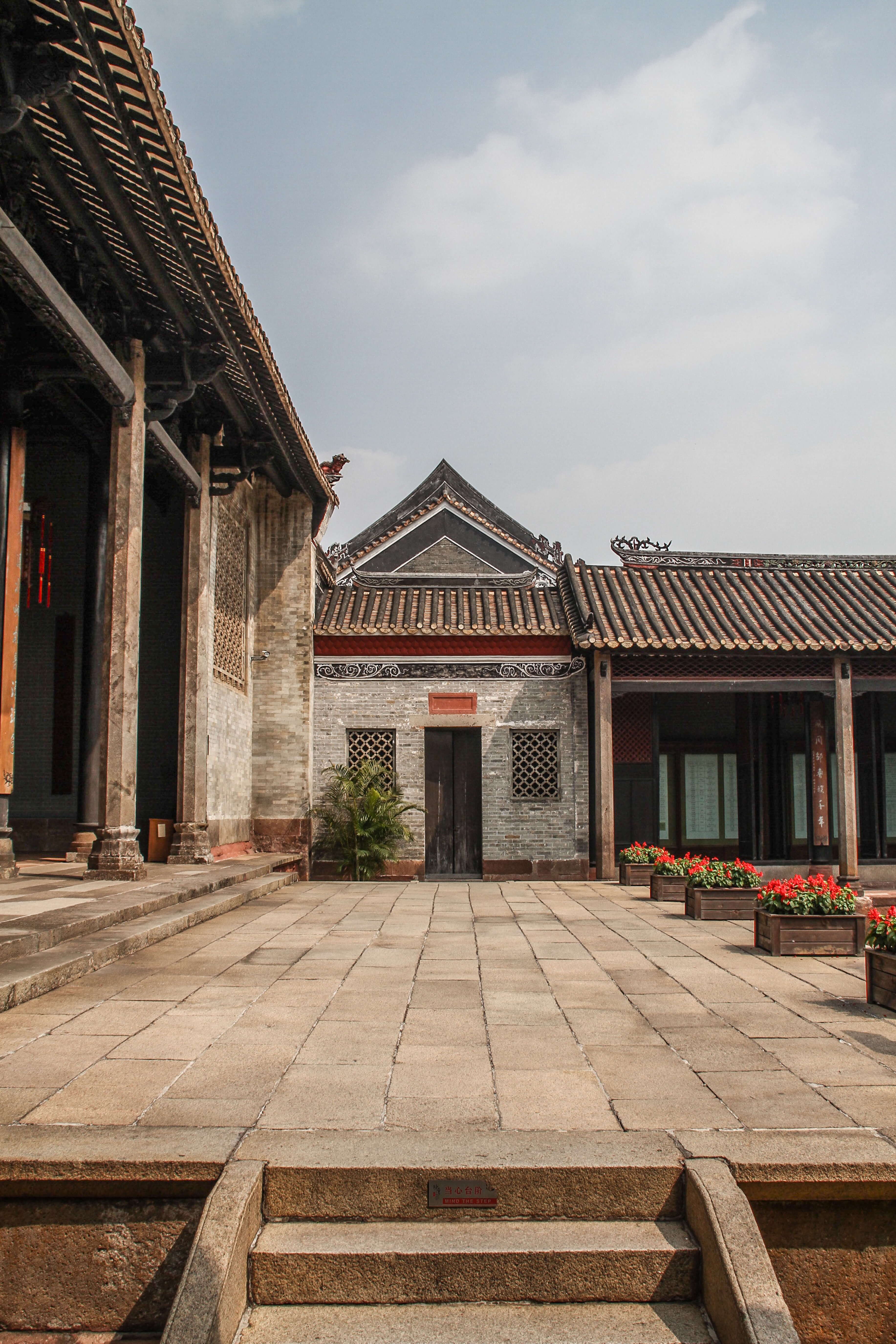
– the use of intricate geometric decorative motives, most of them using the red, white, and black colors.
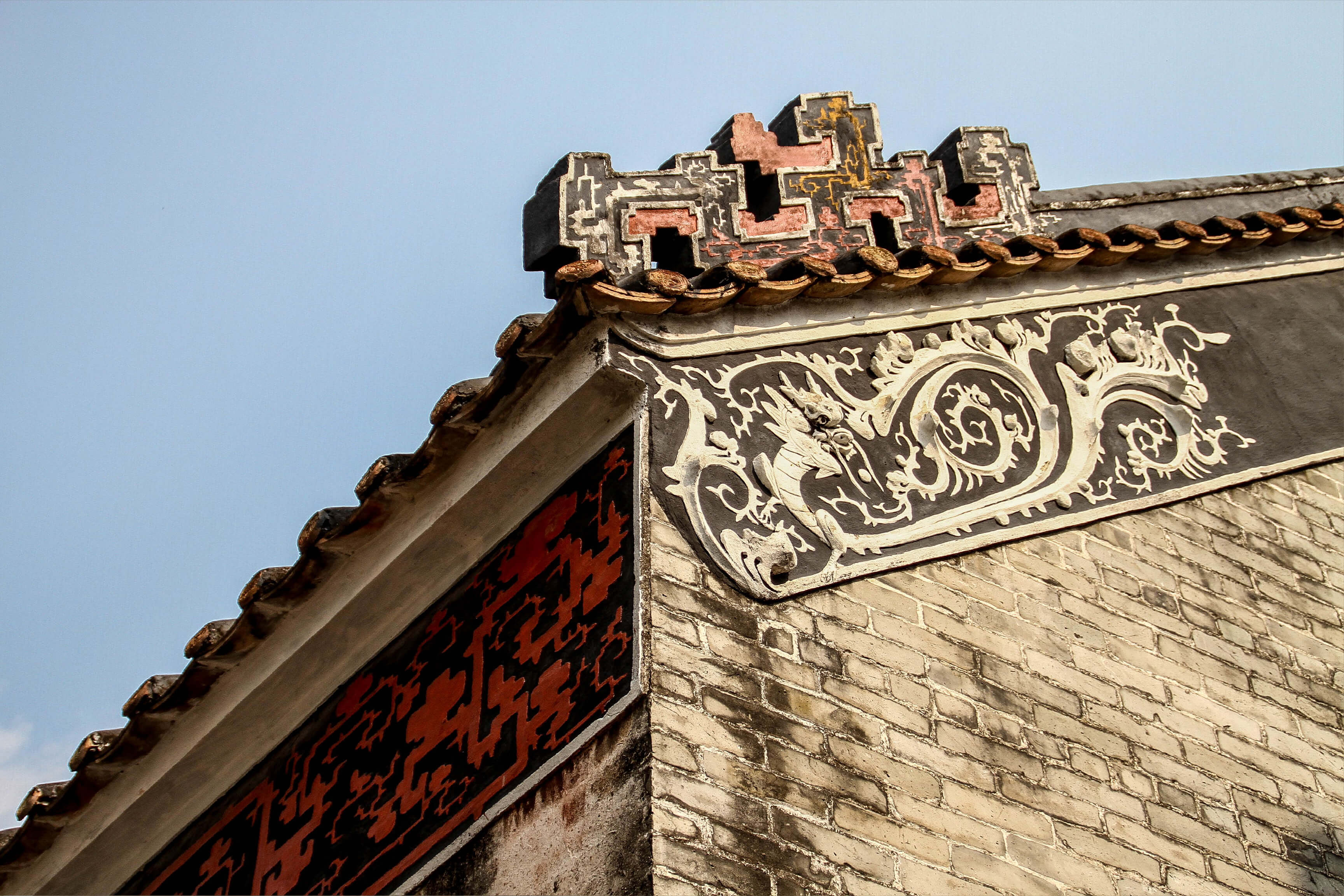
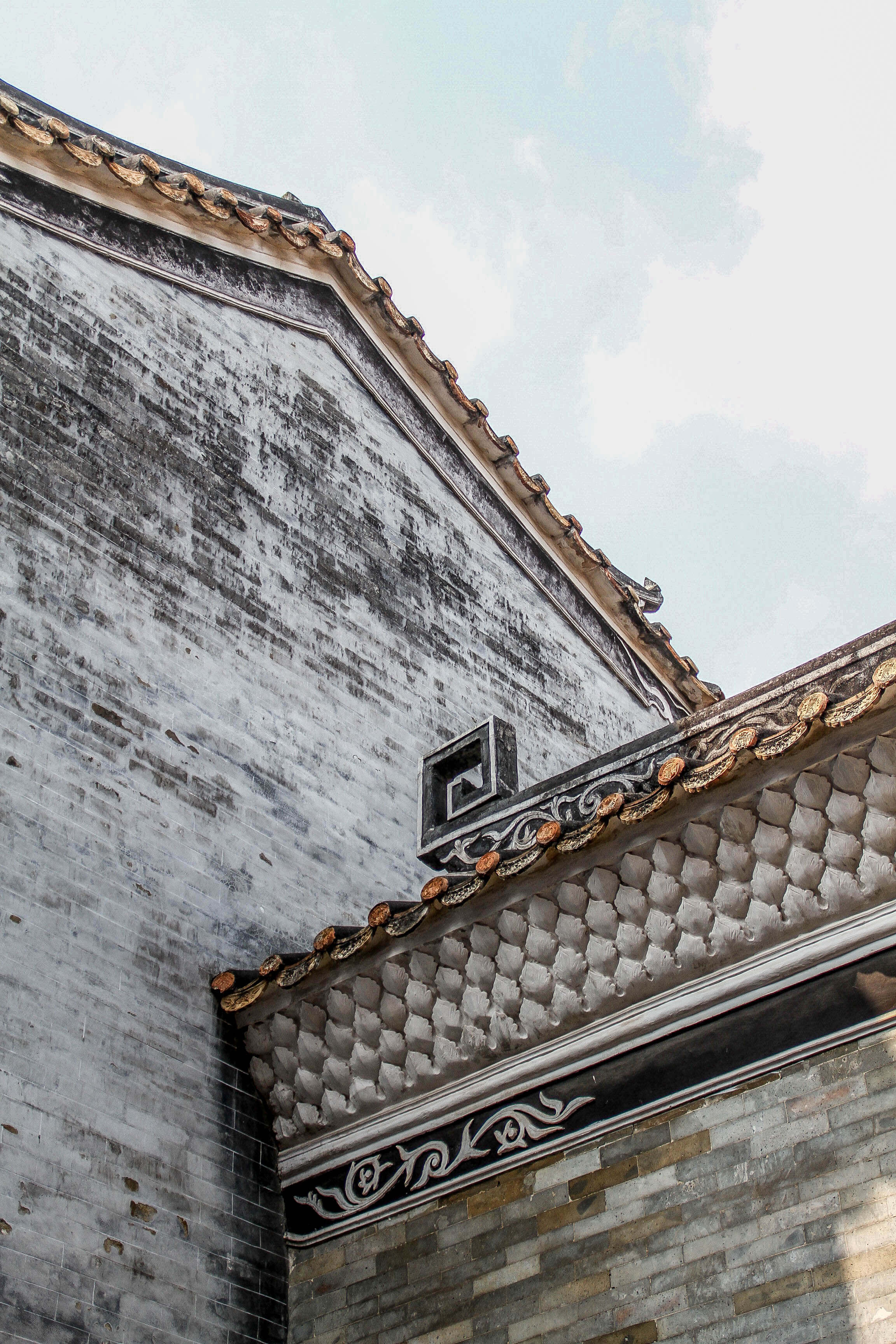
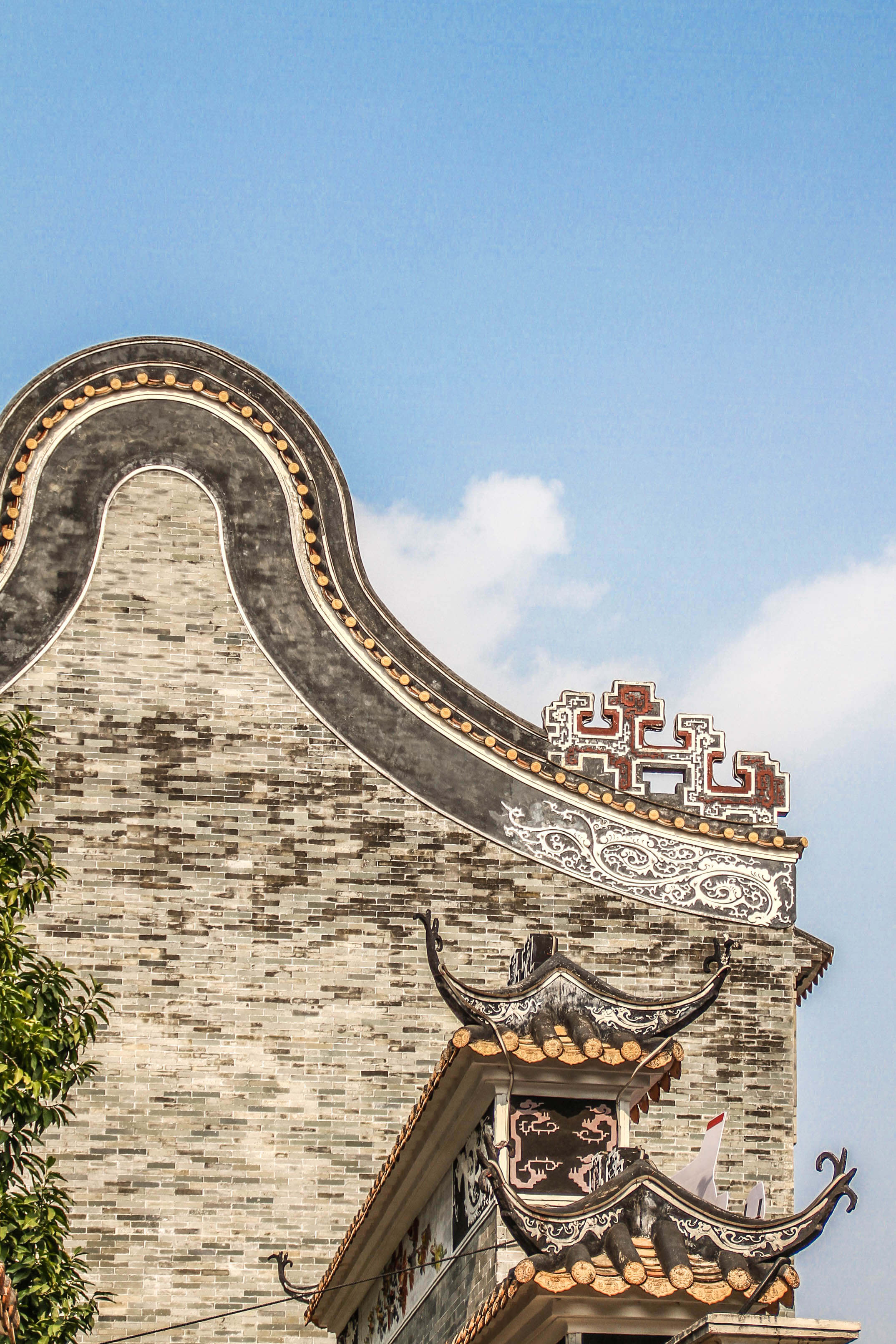
– the use of colorful, highly intricate carving and statues, especially on temples and ancestral halls (but can also be seen on residential houses of wealthy families). The decorations often feature figures and scenes from Chinese mythology and Cantonese folktales. Also flowers, animals, and fruits can be used (all of them holding symbolic and auspicious meaning in Chinese culture) for dwelling types.
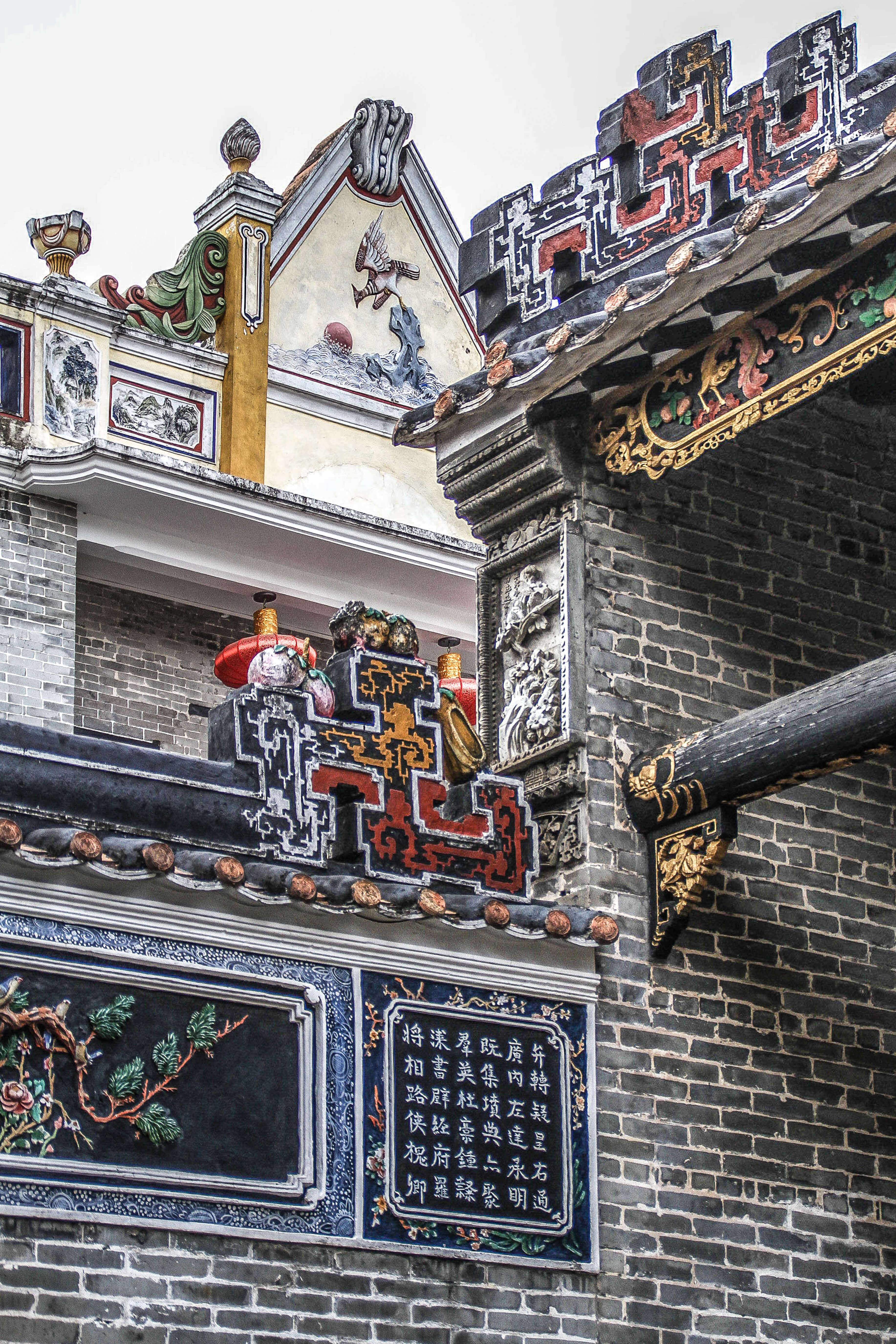


– the use of perforated brick walls and screens for cross ventilation
– large use of stone or brick for walls and structure (instead of the typical Chinese wood) and other material resistant to molds and moisture from the hot and humid climate
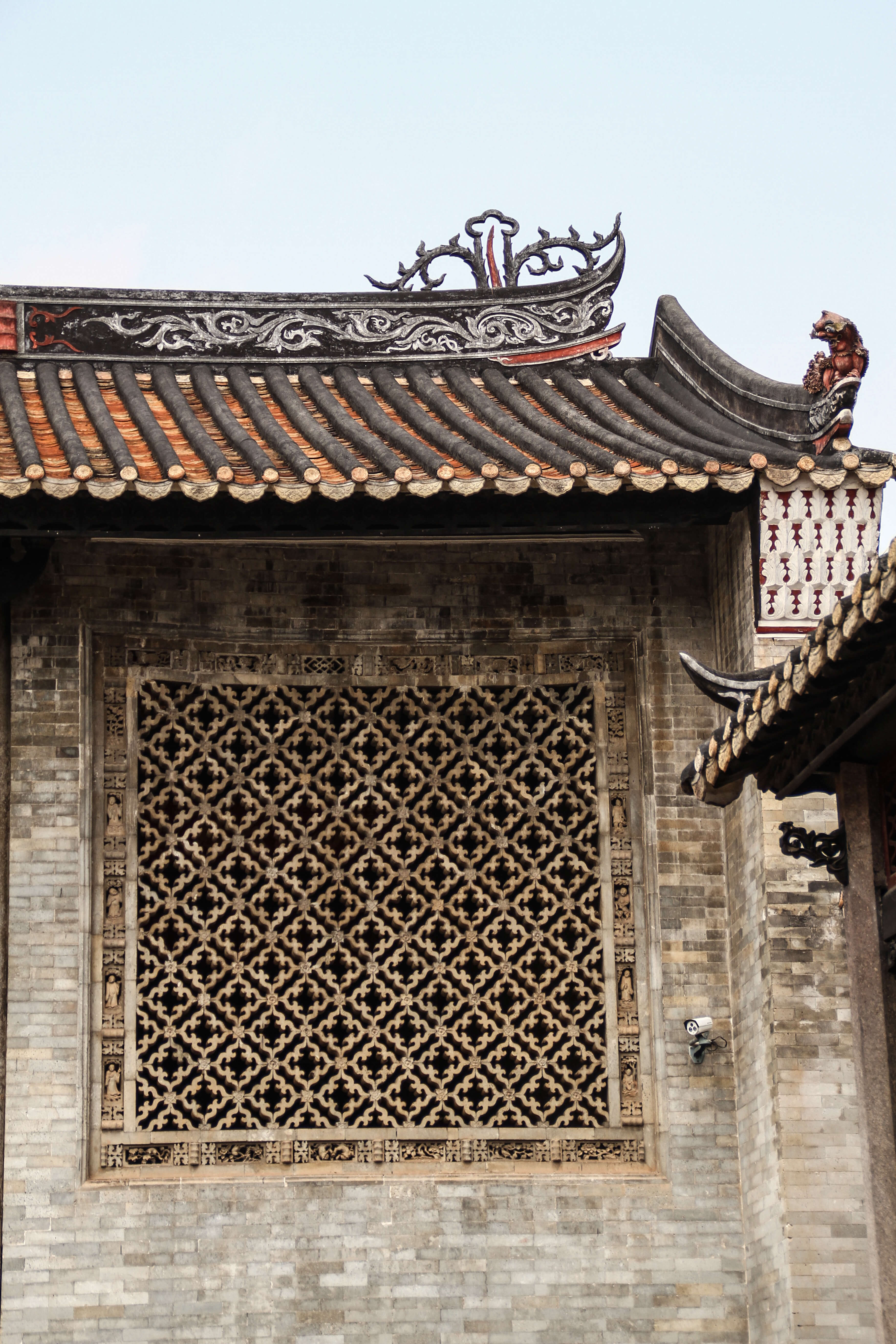
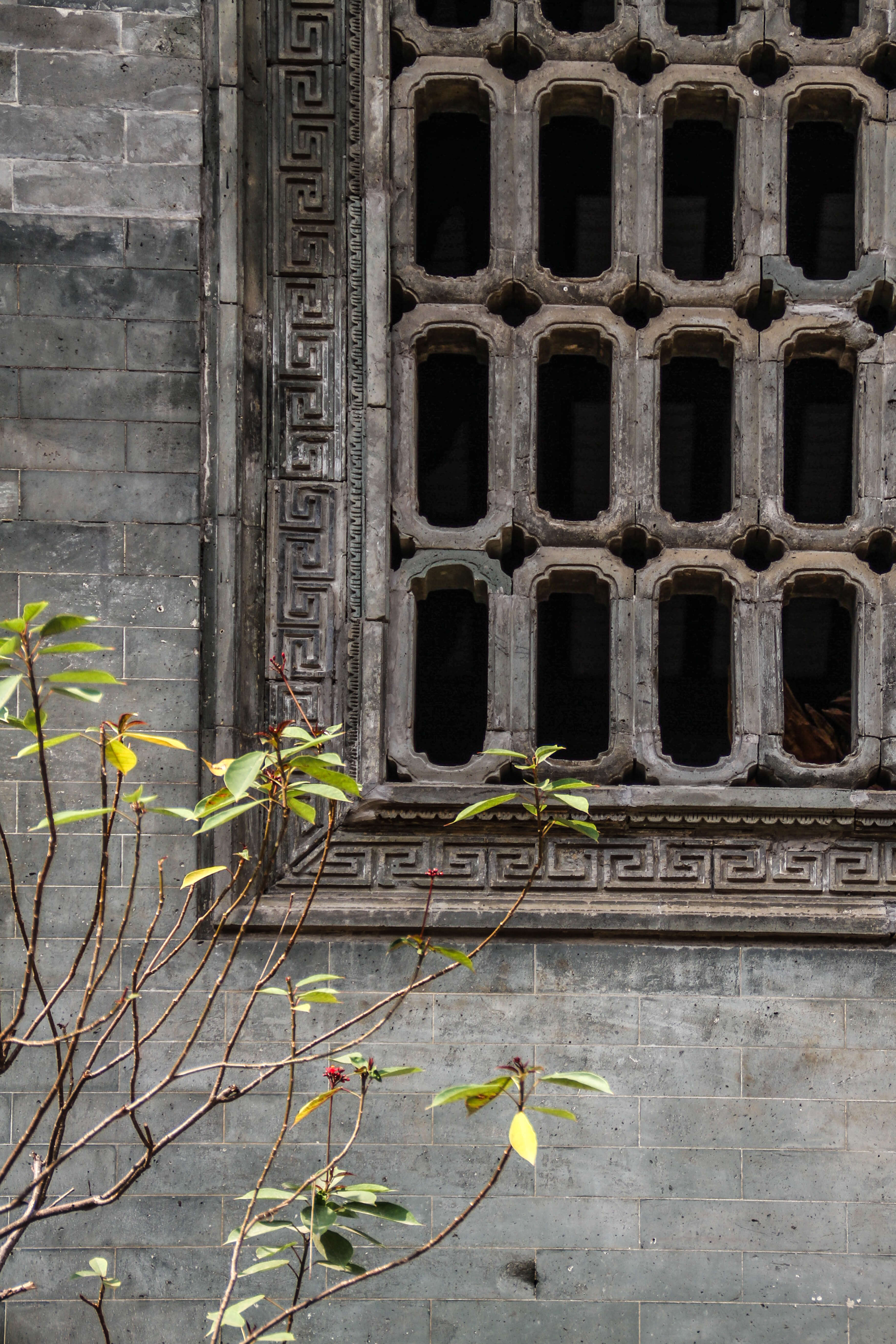
– Wok yi uk – houses with wok handled roof: a special roof shape used in Lingnan style featuring a pair of curved walls at the side of the roof. This shape blocks some of the direct sunlight on the roof, consequently lowering the temperature of the inner space.
Historically, this roof decoration adorned the homes of those who achieved honors in the Empire’s examination system, and kept also as an auspicious symbol for descendants to achieve the same results.

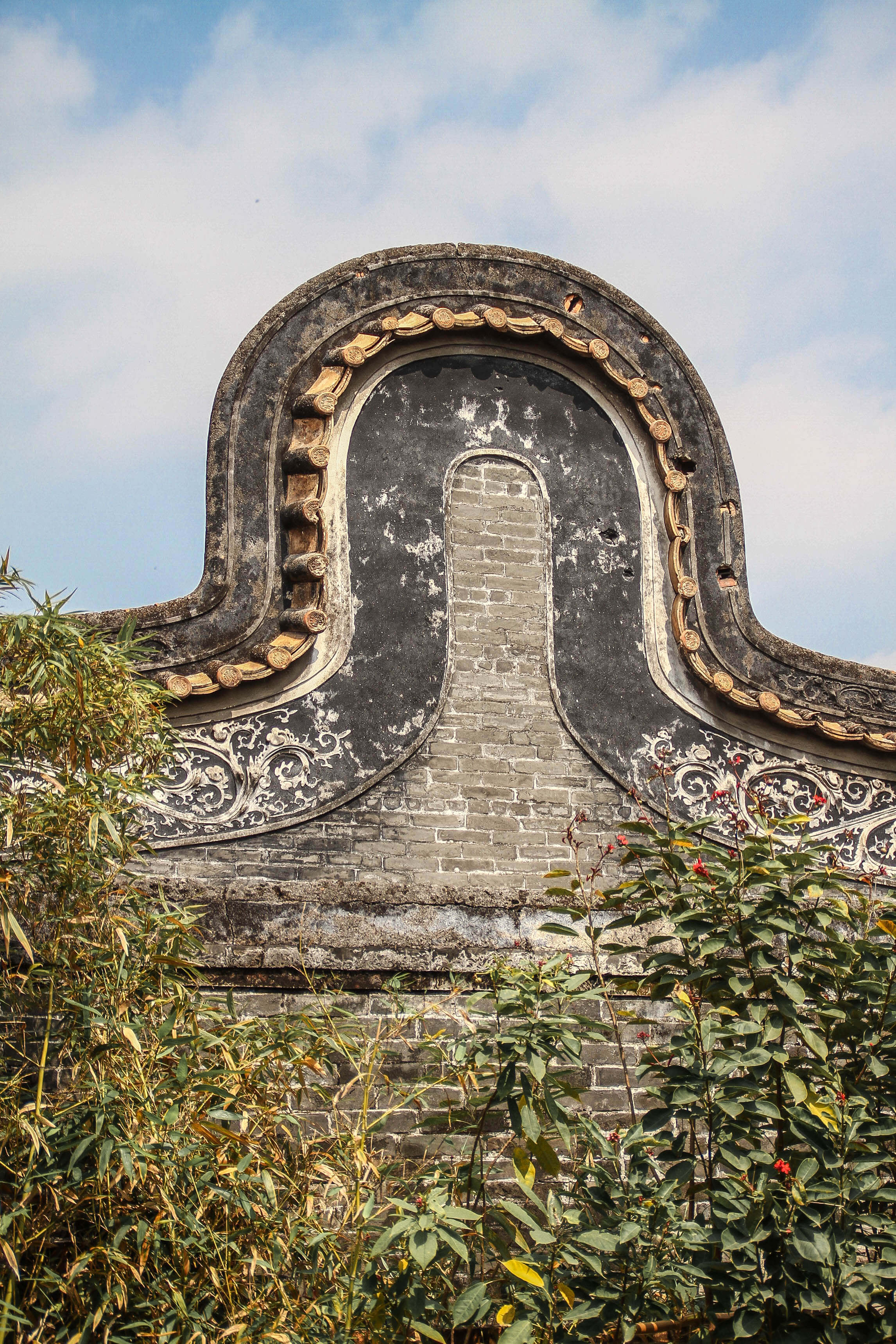
– Oyster shell walls: the use of oyster shells is believed to help the wall be more resistant to strong temperature shifts and insect infestation. While in the past this kind of feature was largely used in the Guangdong area, today only a handful of this special kind of building are left to us, and one of them is in Shawan Ancient Town.
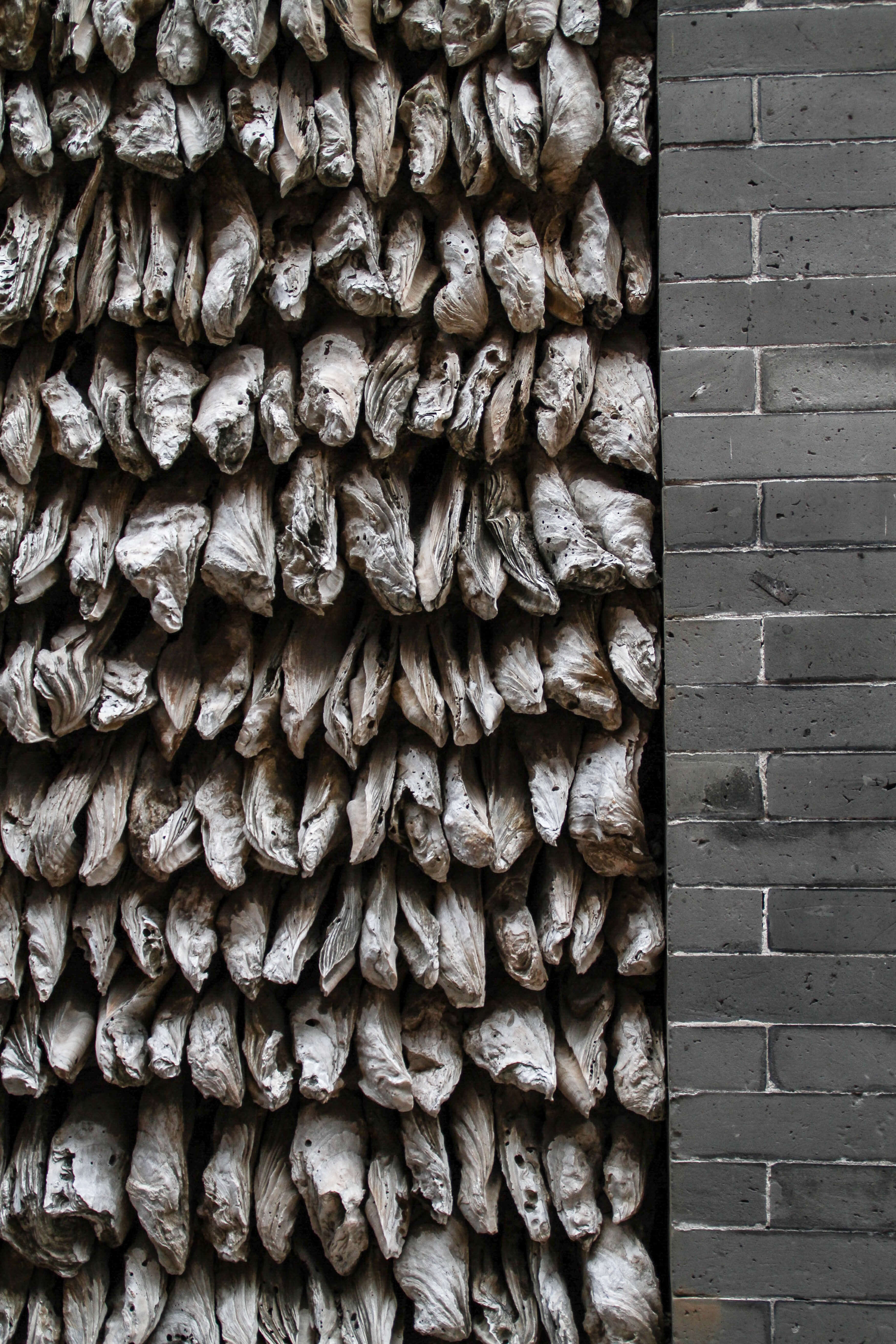
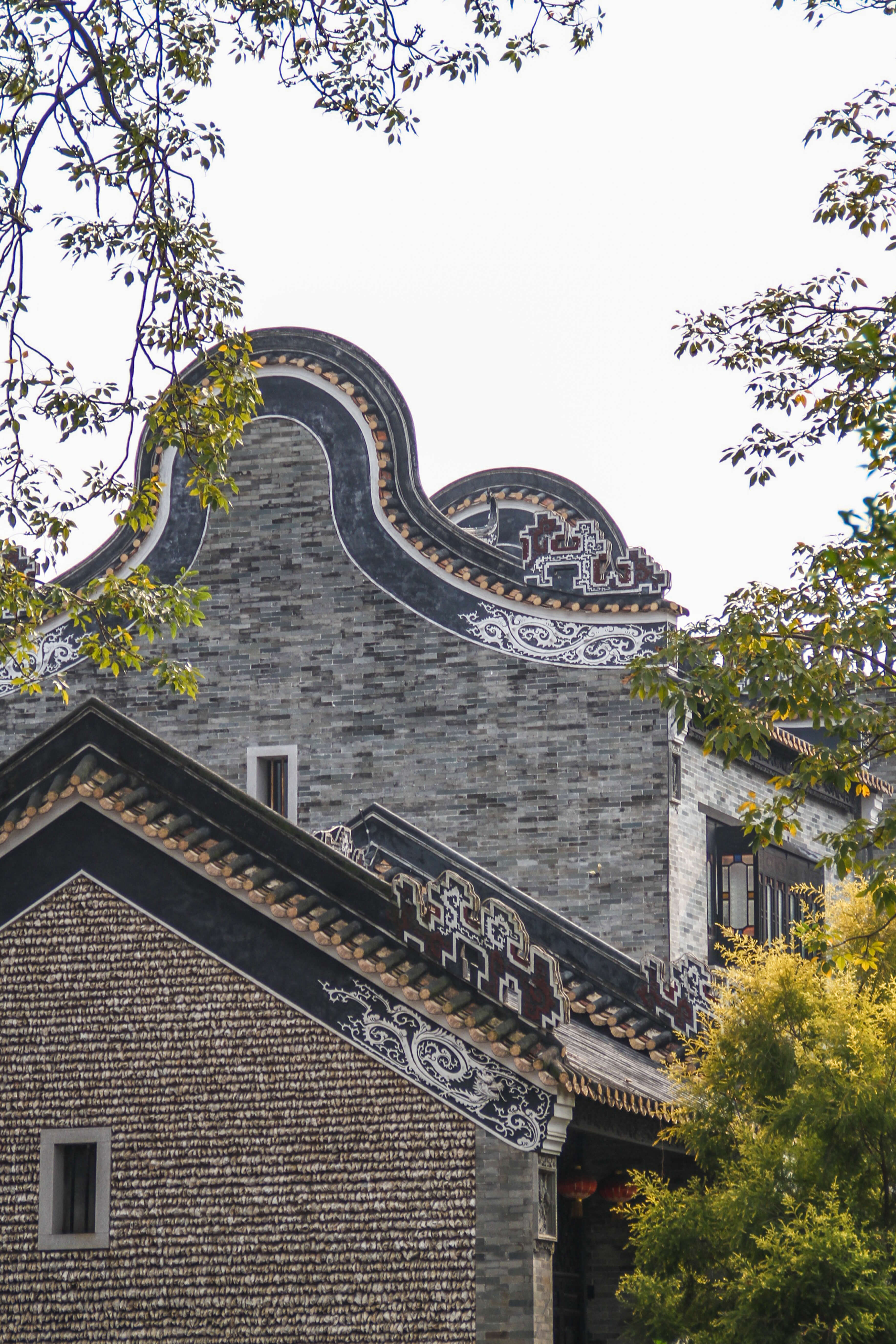
– Guardian Lions: dear to Chinese culture, guardian lions are very common in Lingnan architecture as well, but with slightly different features. Lingnan guardian lions are usually roaring, showing sharp teeth, and have bigger heads with a flat nose and smaller legs. Male lions are usually positioned on the left of the doors, with one paw holding an embroidered ball.
STROLLING AROUND SHAWAN ANCIENT TOWN
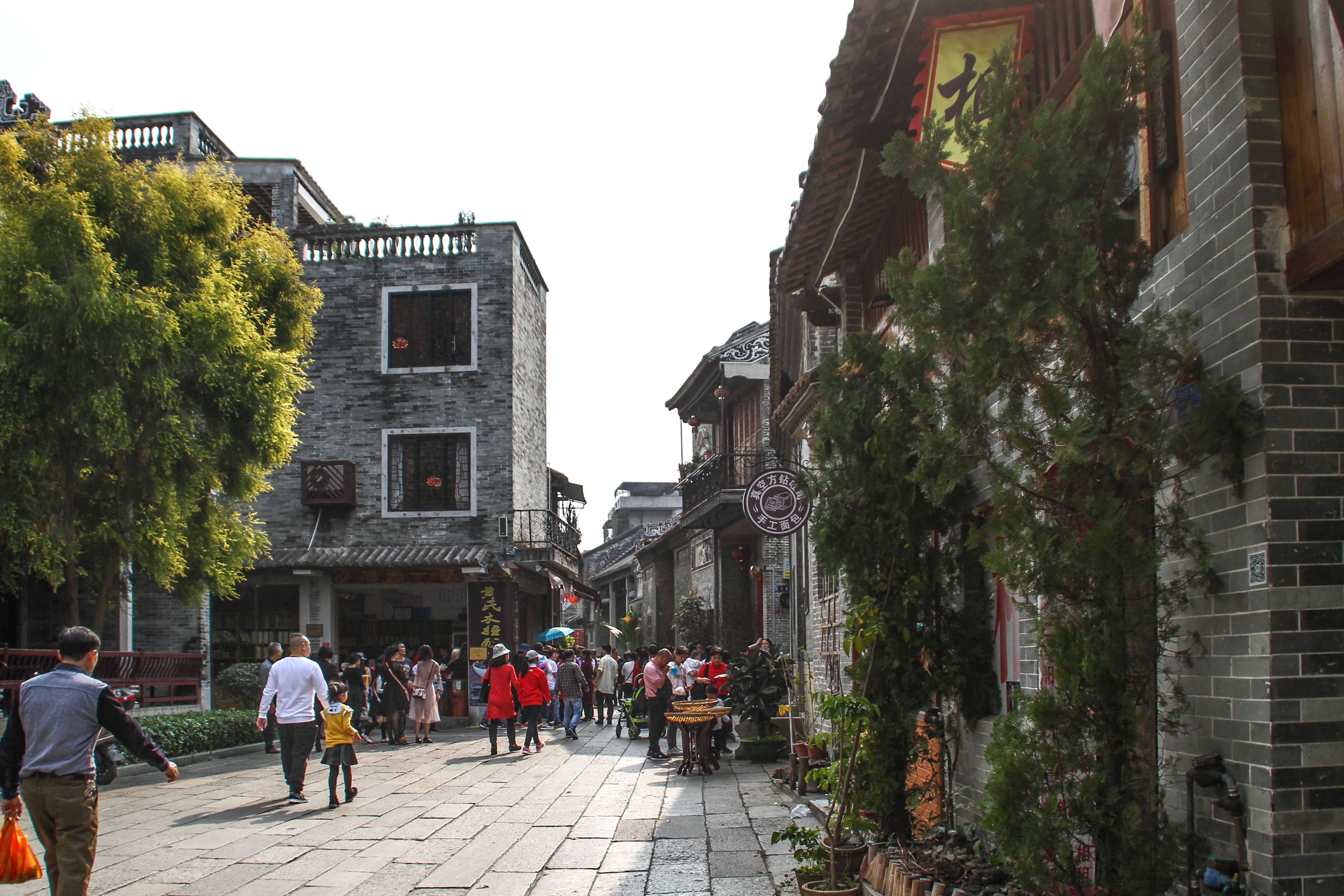
Shawan has a centuries-old history that saw rise to an impressive number of Temples and Ancestral Halls (over a hundred), many beautifully decorated museum and houses, and a few administrative buildings.
However, the city is relatively small and can be visited in just a few hours simply by strolling around and following the visit route indicated on numerous signs hanging in the streets.
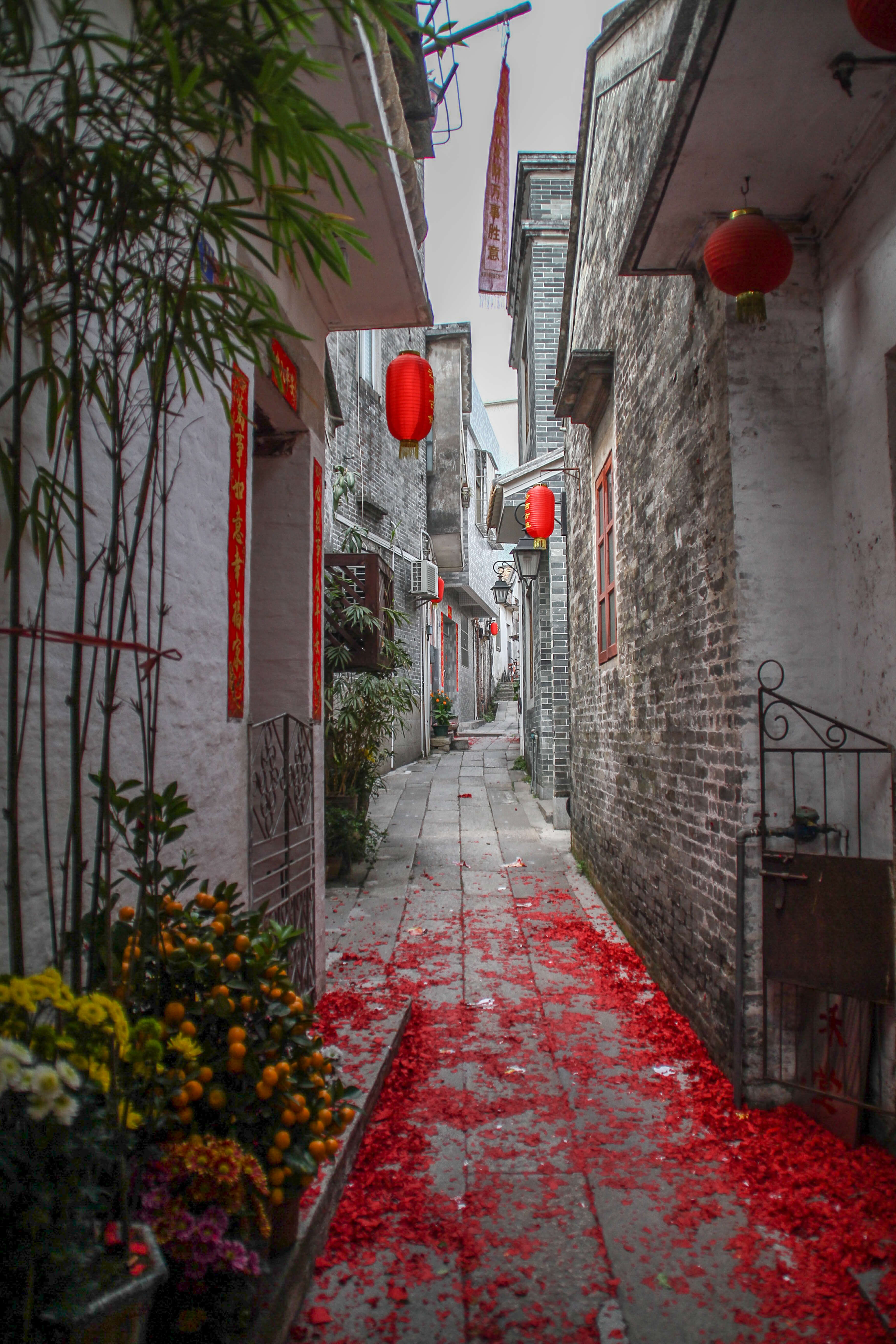

Among the many buildings that can be visited on the circuit, the must-see are: the Wenfeng Hexagonal Tower, the Zhennan Ancestral Hall with its beautiful carvings and the colorful windows, and above all the beautiful Liugeng Hall (the Grand Ancestral Hall – the most important building of Shawan), a true delicate masterpiece displaying all the main characteristics of Lingnan Architecture style.
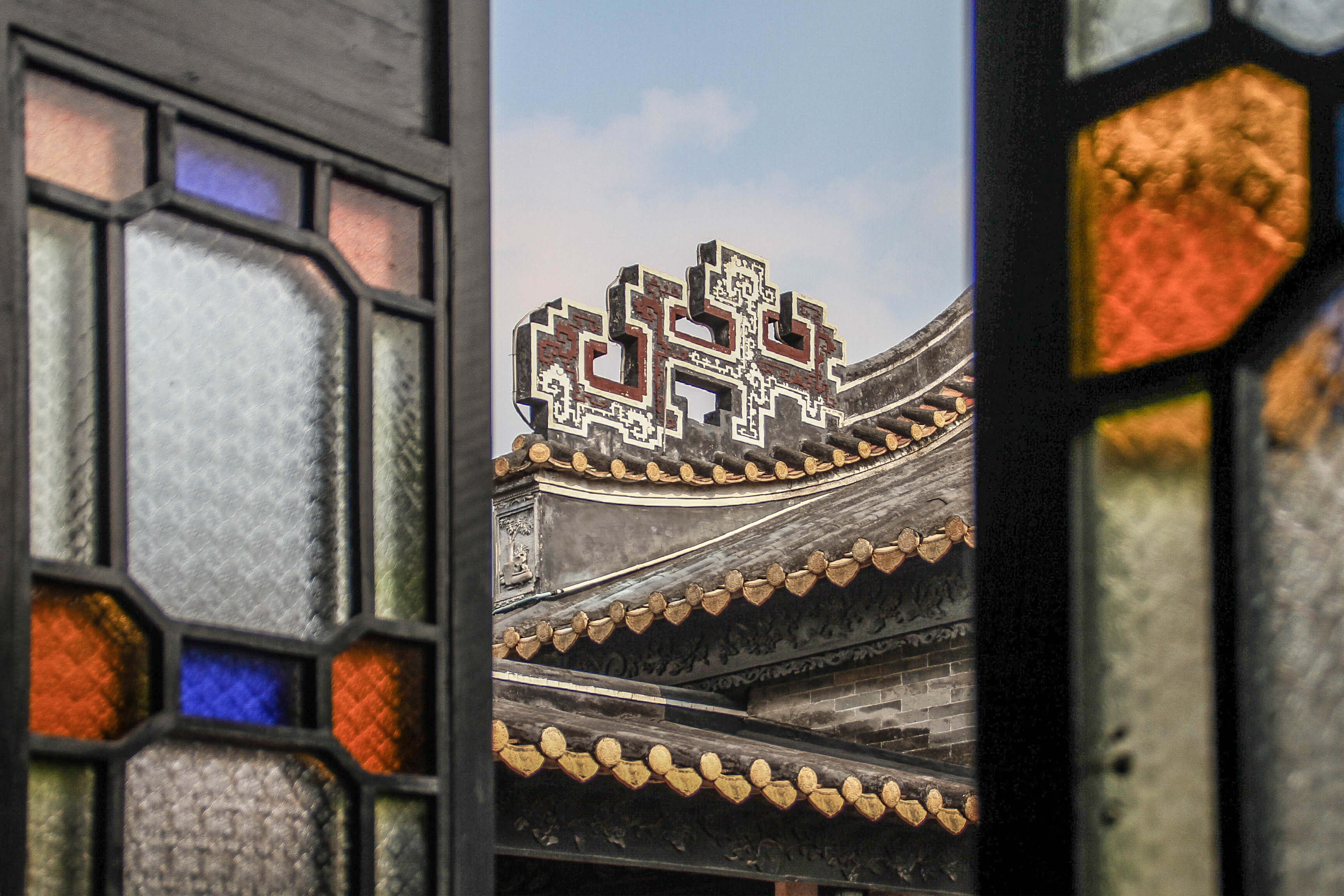
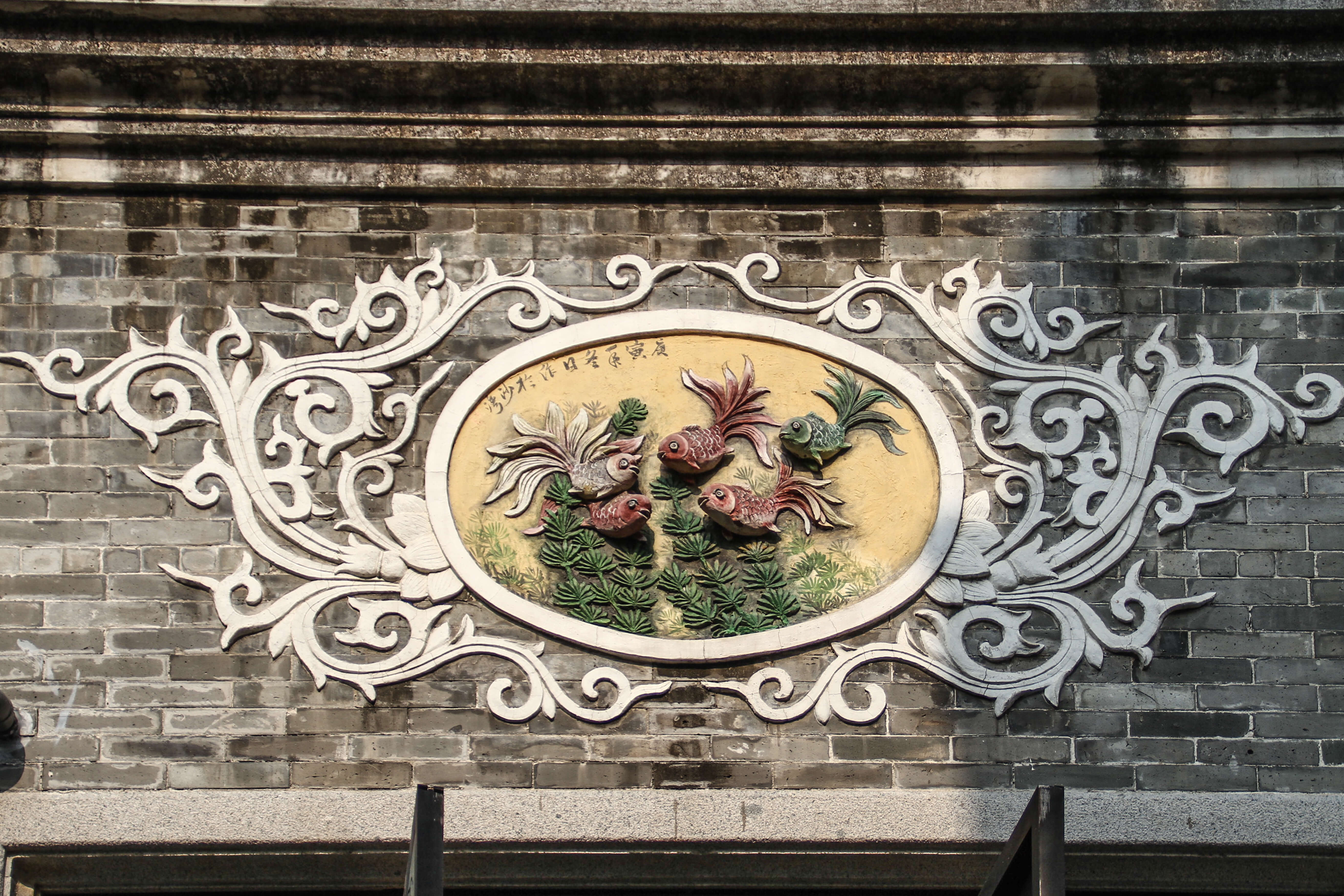
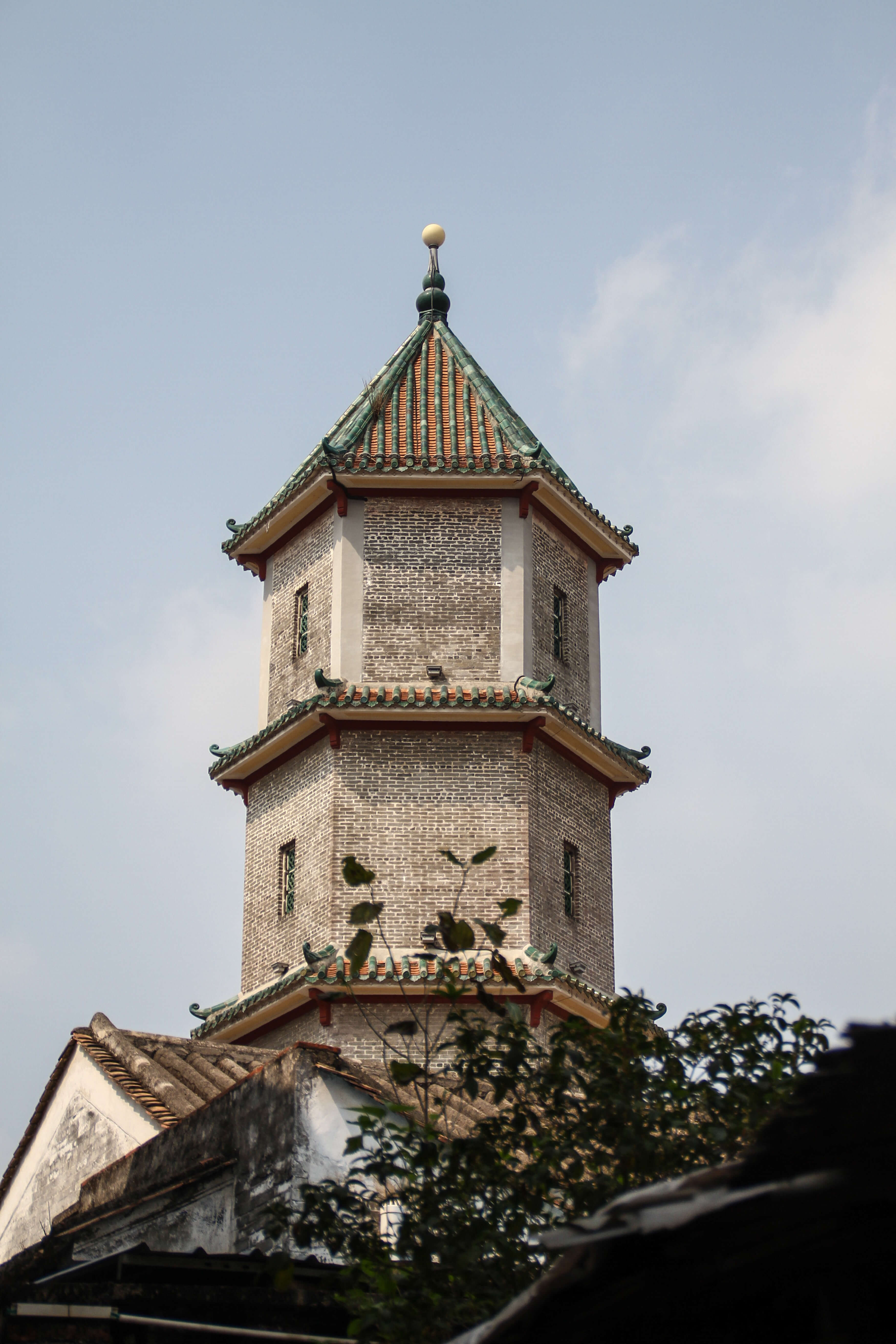

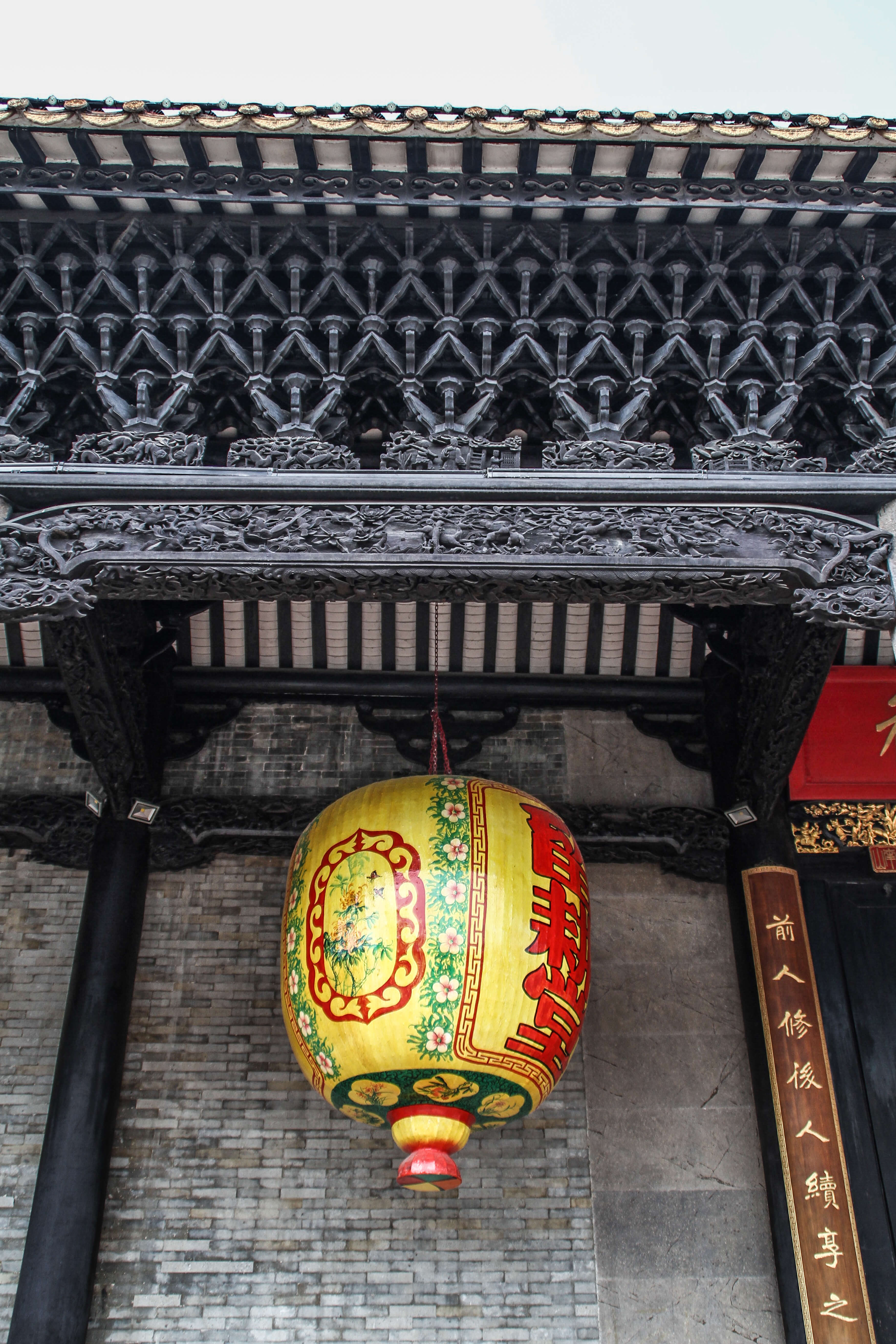
Shawan is a fairly popular cultural tourist spot in Guangzhou, so there are also several restaurants and street food stalls selling local dishes and snacks, and a few Ming and Qing-style gift shops to buy souvenirs or local products.
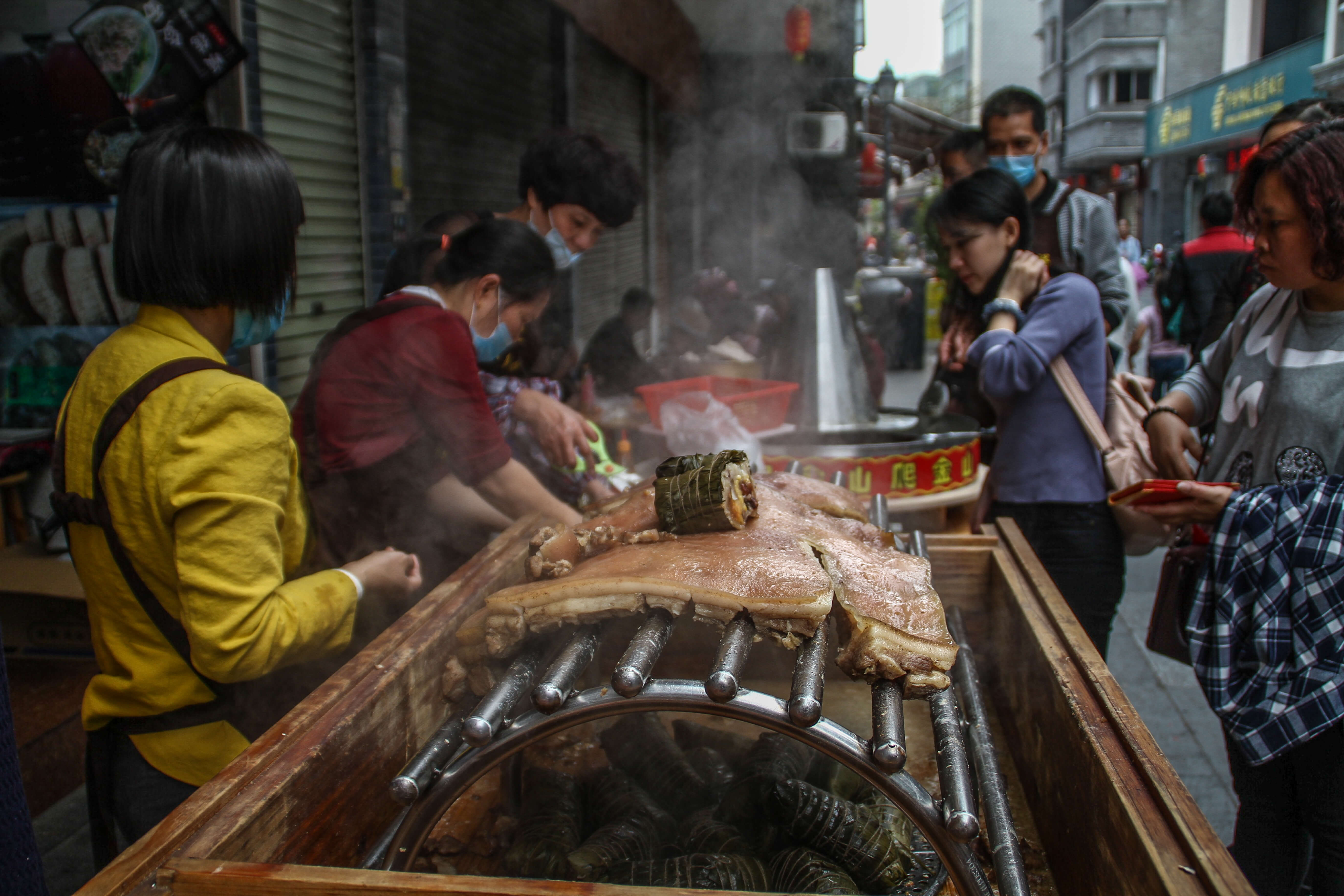
IS IT WORTH IT TO GO TO SHAWAN? MY OPINION
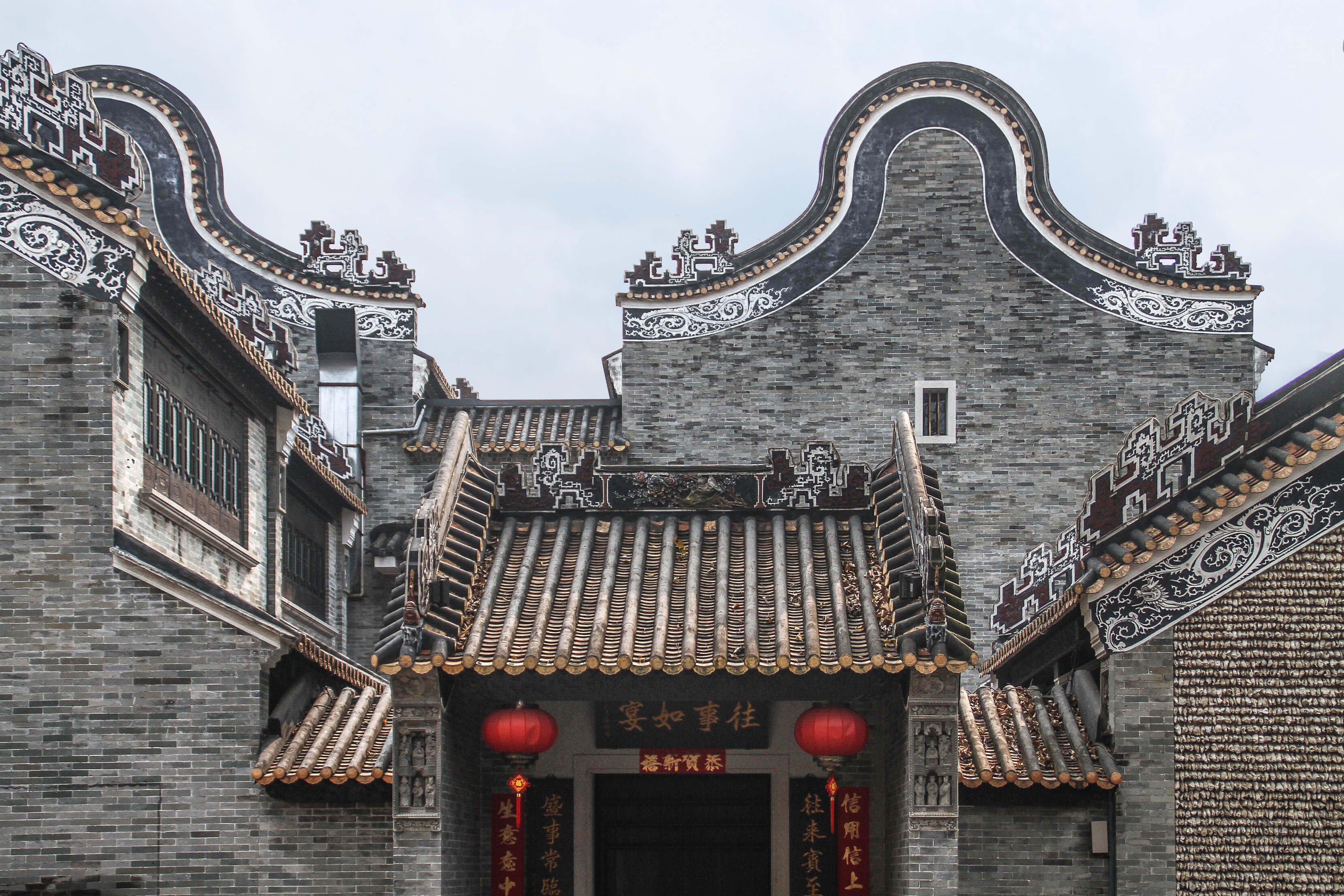
When I went to Guangzhou for the first time I was very eager to admire with my own eyes some traditional Lingnan Architecture, but unfortunately I didn’t have enough time to embark myself in an expedition to some rural villages in the countryside.
Shawan Ancient town was actually a nice and easily accessible choice, absolutely doable in a half day/full day trip within the Guangzhou city, without the needs of finding a driver and all the challenges that non-chinese speakers encounter when traveling in some rural places in China.
The town is very well kept (I would assume that some buildings have been recently restored), as it is a popular tourist destination in the Guangzhou area. There are quite a few souvenir shops and restaurants, many street food stalls, and I personally found it quite touristy, but still pretty enjoyable.
I visited Shawan during the Chinese New Year holiday (which fell at beginning of February), and the place was actually quite full of visitors due to the national vacations, with the locals still celebrating the new year lighting red firecrackers all over the places.
The temples and what is left of the traditional architecture is really beautiful though, and left me positively impressed by the bright colors and fine decorations, hoping to be able to discover more of this area of South China in some future travels.
IF YOU FOUND THIS POST INTERESTING AND INSPIRING, HELP ME TO SHARE IT WITH OTHER TRAVELERS!
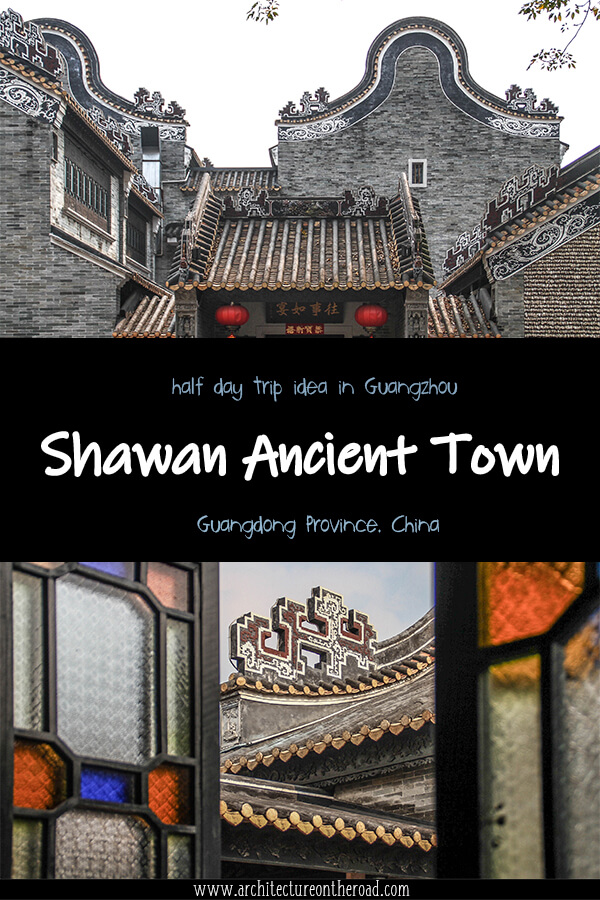
FRom the same province
stay tuned !
search for a destination
latest travel itineraries
latest CHINA articles
Text and pictures by
Architecture on the Road ©
Architecture on the Road
All rights reserved
All photographs on this site were taken and are owned by me (unless credited otherwise).
If you would like to use some of these photos for editorial or commercial purposes, many of these are available on Shutterstock (click the link below). Otherwise, please contact me on Instagram, Facebook, or by email.
Do not use my pictures without my written consent. Thank you!


Comments
What a cool article: Informative descriptions! Great pics! Really good impression! When I went to Shawan it was just so-so…. You seem to find all the good spots and just the right angles. Keep going!